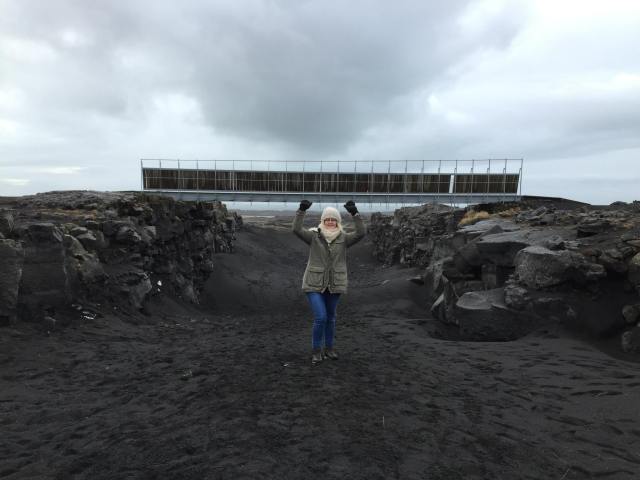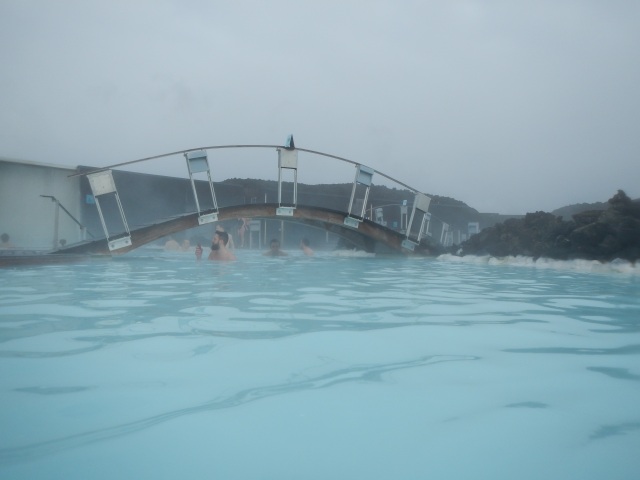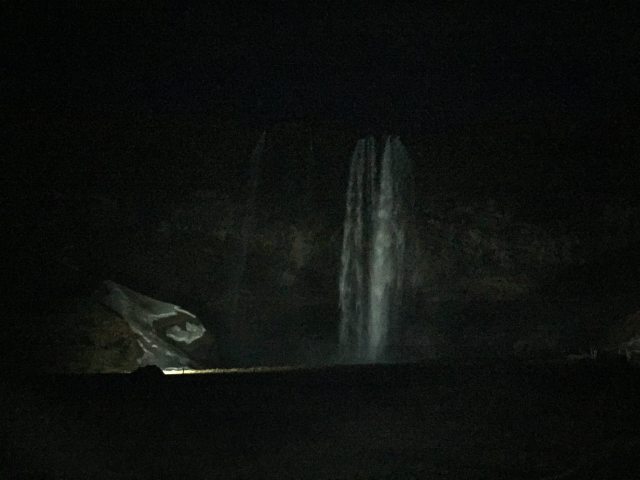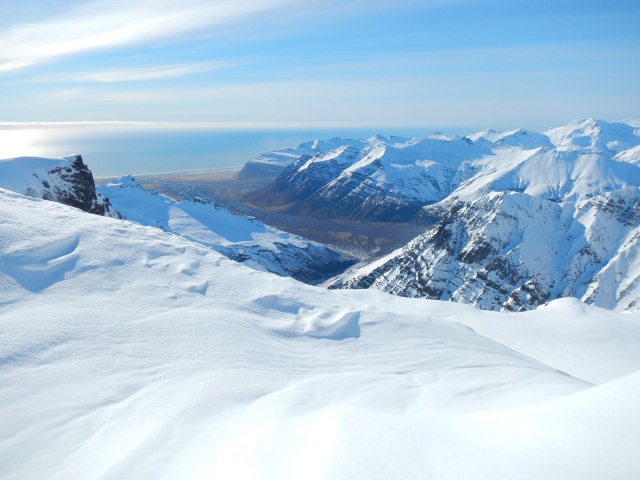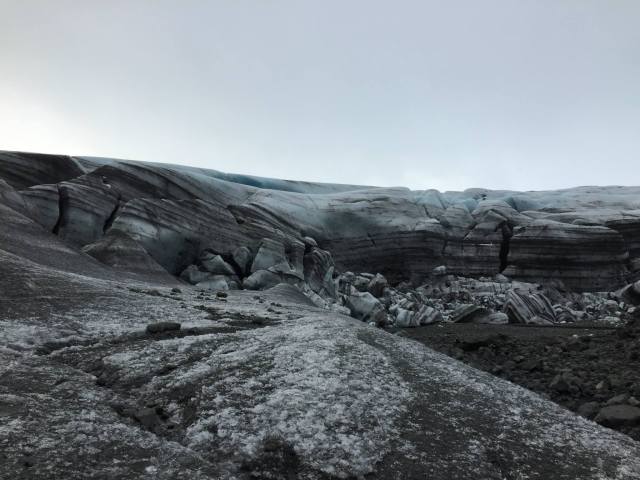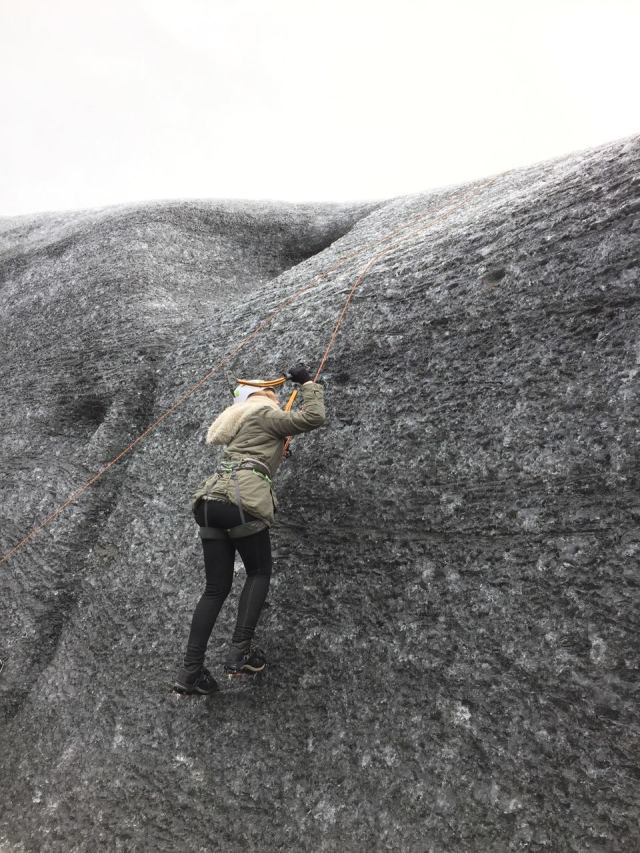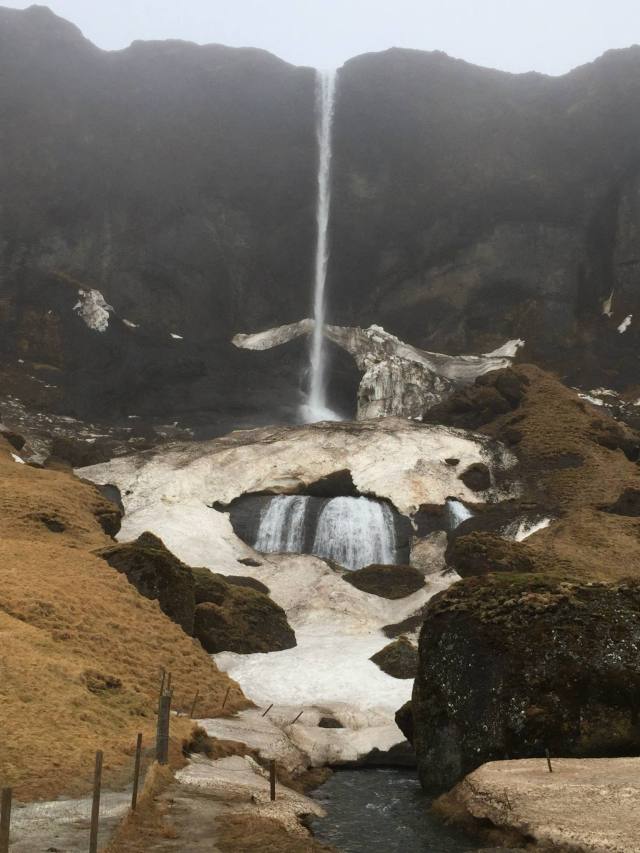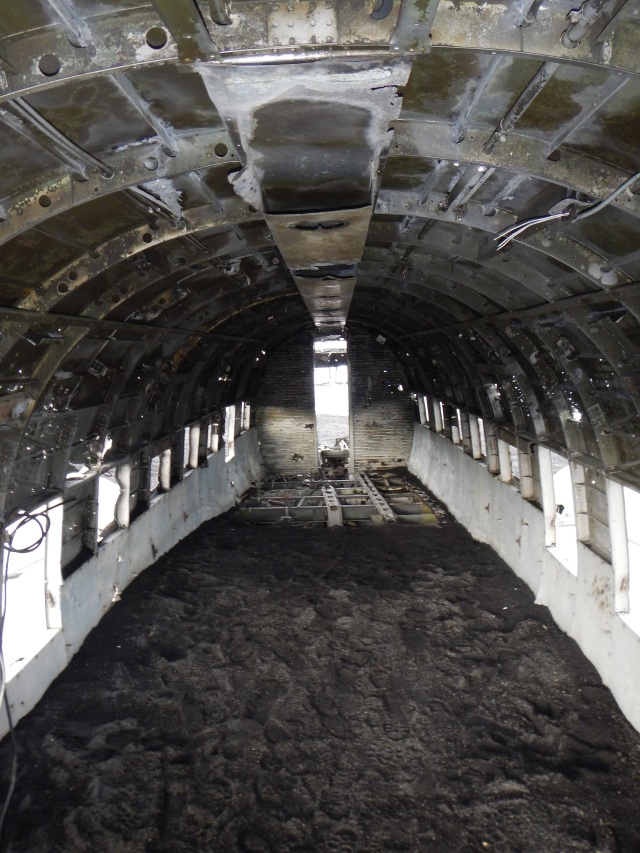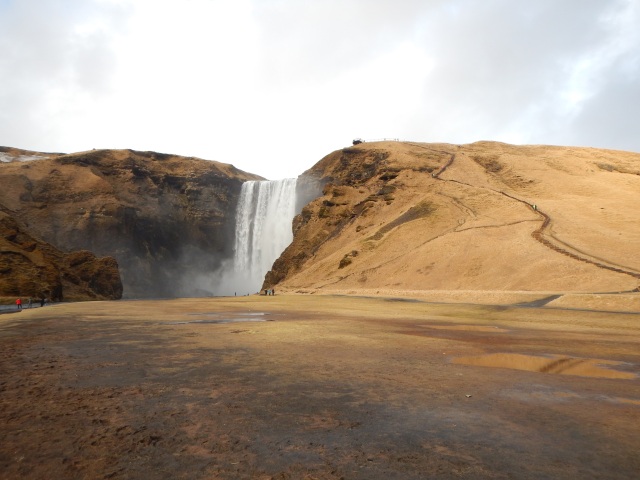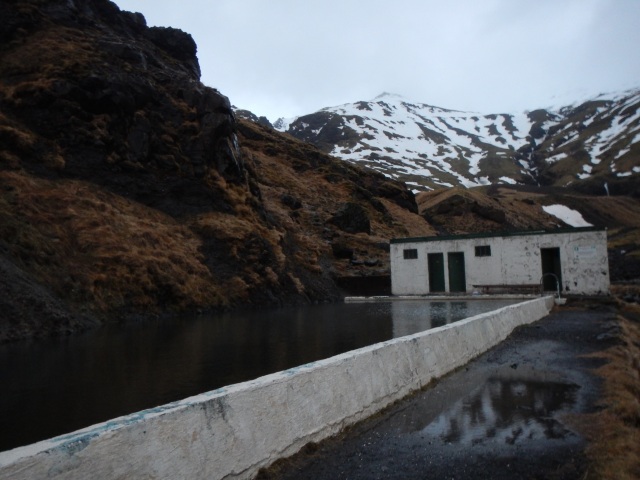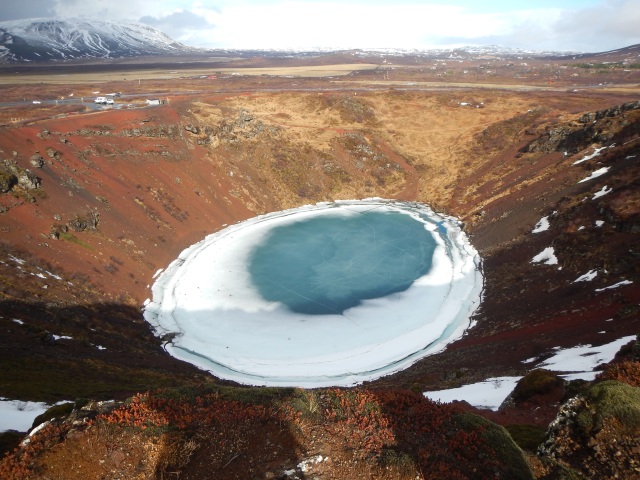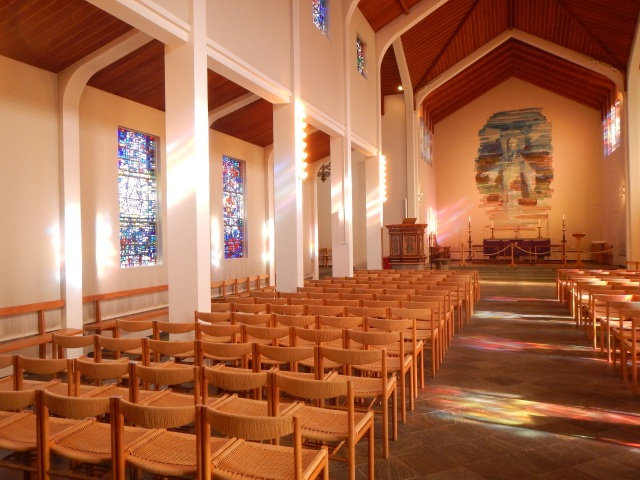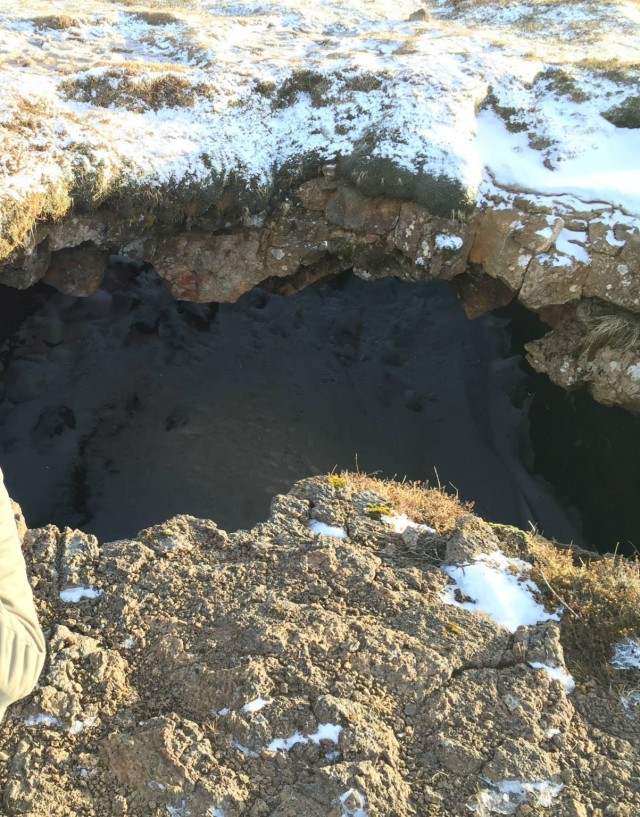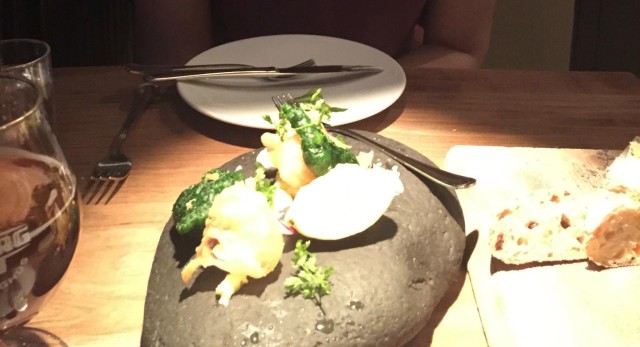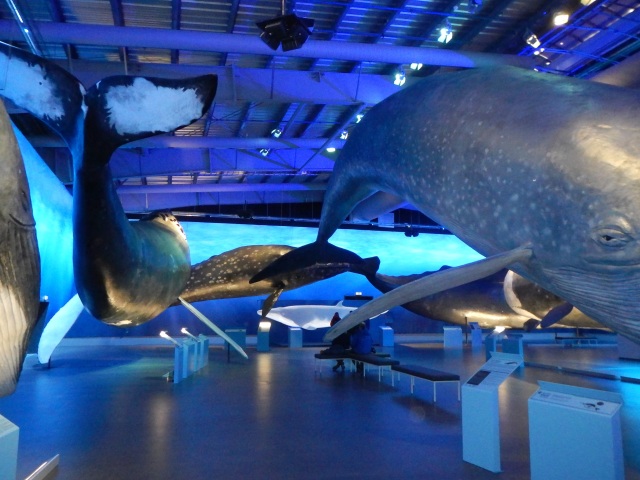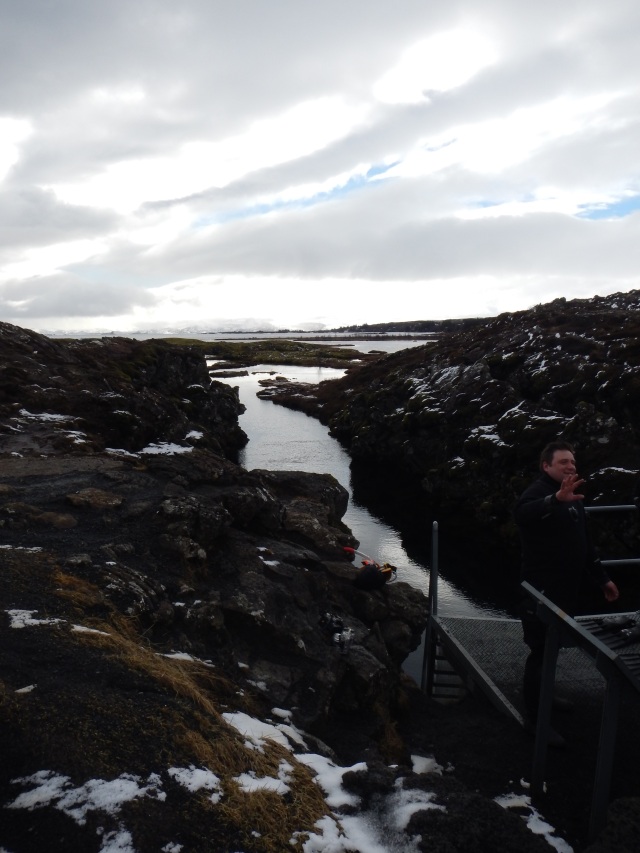Earlier this year, my boyfriend and I visited Iceland and it was one of, if not the best, holiday I’ve ever been on. We went in late March, a good time to see the Northern Lights; experts suggest the best months are November-February, but more generally September-April.
Since then, it seems all our friends have been planning trips there and have subsequently been asking our advice. So here’s what we got up to, day by day.
Day 1
Upon exiting Keflavik airport, the usual airport for people visiting Reykjavik, we met a man from the car company. We decided to hire a car because our trip was 7 days, more than the usual long weekend for tourists, which meant we had time to see things that weren’t offered on bus tours. We booked the car from Auto Europe on recommendation from a friend. They are not based at the airport which makes them somewhat cheaper (less than £100 excluding petrol). The company also uses smaller, local companies throughout Europe, so check your booking form to see what company name will be displayed on your pick up sign. We braved the cold for the first time, shuffled into the taxi van and got driven 5-10 minutes down the road. They tried to sell us their own insurance (though we had already bought some with Auto Europe) as well as sandstorm cover. This was to cover us from supposedly random sand storms that happen across roads etc in high winds that leave lots of tiny dints in the car. Apparently it costs into the tens of thousands to fix. We didn’t opt for the sandstorm cover, thinking that if the winds were high we would be able to find cover somewhere and having checked the weather forecast, we didn’t feel it necessary.
Now the fun begins!
First stop: the Bridge Between Two Continents. It’s a man-made bridge connecting America to the West and Europe to the East over the gap that was formed by the tectonic plates of the continents drifting. From the airport, there are two ways you can drive because of the ring road; West along the 44 and 425 or East along the 41 and 43. We drove West for about 20 minutes before noticing the bridge on our left. The bridge is clearly visible from the road, so don’t stop early and try and walk to find it like we did! It’s a bizarre feeling to know you are stood on one continent when your travelling partner is stood on another.
From there, we drove to the Blue Lagoon. Again, we could have gone two ways. We thought continuing on the West road and up the East looked quicker on a map, but our sat nav told us otherwise. It took around half an hour before the approach to the geothermal plant started to fill the car with the enticing aroma of bad eggs. We didn’t have to queue for tickets as we bought them online, as was suggested due to it’s popularity. We had bought the Comfort Package which included the use of a towel, a drink at the bar and a face mask. However, I don’t think it was worth it. In certain areas of the pool, there were troughs of natural white mud gathered from the outskirts of the lagoon that visitors can use for face masks. The face mask that comes with the Comfort package is a small sachet, almost identical to this mud. If you bring your own towel and buy a drink at the bar, it’ll be cheaper than the package upgrade. That aside, for ~£35, the Blue Lagoon is fantastic! The water is beautifully hotter than a bath after the freezing dash from the changing rooms building. We spent around 3 hours there.
Next we embarked on a 4 hour journey to the South East. We were visiting this area because we had booked a trip to the Ice Caves for the next day. Disappointingly, it got cancelled a few days before departure because the caves had melted too much. Still, we made our way to the hotel, Fosshotel Nupar. It was a tiring drive, mostly in the dark, on roads that don’t have lights. However, it was exciting to spot a lit up waterfall in the distance, Seljalandsfoss. We pulled up, walked up as far as we could before it got too icy, got a little sprayed and then decided to come again in the daytime (see Day 5). It was magical, like most other natural wonders in Iceland.
Stepping out of the car at the hotel around 23:30, we glanced up at the sky in awe of the Northern Lights. As you probably know, some people visit Iceland and never see a glimpse, so we were very lucky to see them on our first night. They appeared white, not green and purple as in photographs, but they certainly did dance across the sky. After checking into the hotel, the receptionist kindly offered us some hot chocolate and biscuits that were laid out for a Norther Lights Tour visiting the hotel on their nightly itinerary.
Day 2
We started the day with breakfast in the hotel. It was nice – a typical Icelandic breakfast with pancakes, pastries, cold ham/cheese and cereal. We sat near the window looking towards the mountains, with spots of snow covering the browny grass. Iceland is such a beautiful place. Just driving around and seeing the different landscapes, where the whether changes from sunshine to snow within minutes, is one of the best things you’ll experience out there. Driving also means you can simply stop off when you see something interesting.
We set off further East towards Skatafell, which took about an hour. As a replacement for the Ice Caves tour, we were on route to a Skidoo Tour (Tour III). As we reached the meet up location, it happened to be the day of the Total Solar Eclipse, so we watched that in crystal clear skies. Our group got kitted out with snow suits, wellies, gloves and helmets before clambering into jeeps. The guide drove us up a steep mountain that gradually got snowier and snowier. After 20 minutes we stopped and swapped into vehicles that drove on belts instead of wheels. Finally we reached the top of the glacier with endless views of pristine, untouched snow.
We paired up and swapped onto snow mobiles. We were on the snow mobiles for an hour, with a break in between to swap drivers. During the transition we walked to the edge of the glacier to see the sea in the distance, leg-deep in snow. I’d highly recommend having a go at driving – you get a great sense of freedom speeding across the open snow. It’s expensive at ~£100 each but worth every penny.
During the afternoon, as a further apology for the Ice Caves cancellation, the company took just myself and my partner Ice Climbing for a reduced fee (~£50 each). Personally I still thought it was a little expensive but it depends how much you enjoy that type of activity. First, we were given crampons for our shoes so we could walk over the icy terrain towards the ice wall. On the way, the guide pointed out geological features and explained their creation.
Before climbing, we helped set up all the safety wires as they would be if you were doing it on a larger scale. Attached to the safety harness and armed with ice picks, I embarked upon the wall. It’s much more difficult than it looks – you need strong arms and legs to latch with your pick, dig in your toes and balance like a monkey.
Day 3
After checking out from Fosshotel Nupar, we heading back South West to stay 2 days around the Golden Circle, before finishing our holiday in Reykjavik. We made several stops along the road on the way back.
West of Vik, we found a lovely waterfall whose water tunnelled through a doughnut like hole before crashing to the floor. I’ve been unable to find the name of it so it mustn’t be famous; perhaps it was this particular formation of snow and ice that made it look special.
Next, we stopped at the side of the road to have a walk over some strange, green, spongy moss. I don’t know much about this, but as there was a tour group of photographers there, it must be something of interest!
Arriving at Vik, we took a walk on the beach. There wasn’t much to do here, so we heading a little further up the road (driving as we had been that day from East to West, taking the first turning on our left) to the main Black Sands Beach. In addition to the unusual sensation of black beneath your feet were the breathtaking rock formations and caves.
The next road on the left leads to a hill with a statue where you can view the Black Sands Beach from a distance.
A little harder to find was the Crashed Plane at Sólheimasandur turned abandoned wreckage after an emergency landing went wrong. Driving further still is a little dirt road on your left with a sign stating that you had to be driving a 4×4 to use it. This was the only road during our trip that had such a sign, so generally it’s fine to hire a normal car. Ignoring the sign, we drove very, very, very slowly down the rocky road. Occasionally, I had to jump out to move boulders out of the way so it didn’t scratch the underneath of the car (something that gets inspected upon return to the rental company). It took about 20 minutes to drive, compared to around 45 minutes to walk. Not much difference you might think, but in the cold wind and drizzle it was preferable. This more detailed description of how to find the crash might be helpful.
The plane itself was an incredible sight. We were the only people there, walking around inside the aircraft, perching in the cockpit and riding the wings.
Skógafoss waterfall was next on our list. It’s wasn’t my favourite waterfall, but it’s fairly big and a nice view once you’ve climbed the many steps to the top. There are also rest rooms with showers in a small cabin near the entrance.
The final stop of the day was Seljavallalaug, a naturally heated pool in the wilderness. For some reason, it’s one of those places that easily overlooked by other visitors but I can’t recommend it enough. It’s about a 20 minute walk from parking up, but it did involve crossing small streams at that time of year. There are changing rooms for both genders but the floors are bare, wet and muddy and they only contain a few hooks and possibly a bench. None of that matters though when you take a dip in the middle of nowhere. The water was mildly warm throughout but boiling next to the pipe inlet. Had it been hotter and not raining we’ve have spent a little longer than 15 minutes in it!
Our accommodation for the night was Hotel Laekur. It was gorgeous! A cosy cabin-like feel, yet modern with an outdoor hot tub. The owners were lovely and woke us up at 2AM that night with a Northern Lights wake up call we had requested earlier. Hotel Ranga is nearby and very highly rated, however give this place a try. With only a few rooms, it’s got a lovely family feel to it.
Day 4
Day 4 began with a visit to Kerid Crater. It’s the only geological attraction we visited that charged an entrance fee though it was only 350 ISK (~£1.80). It’s certainly worth the money; the red/green rocks and foliage of the sides contrasted with the blue/white watery, icy centre provides some stunning photographs. It takes about 20 minutes to walk around the rim and there’s also a path leading to the bottom that takes around 10 minutes to descend.
Next we made our way to Skalholt Church. It’s a gorgeous little building with a museum underground telling the story of King Christian III of Denmark (optional donation if I remember correctly). It looked beautiful with the sun shining through the stained glass windows.
Onto Strokkur Geysir, a spring that intermittently shoots water up towards the sky. Being a must-see, it’s one of the three destinations on a Golden Circle Tour. As we were driving there, we parked just across the road at the cafe, which serves typical Icelandic lunches. FYI, these are: ham, cheese and mustard sandwiches, Kjötsúpa (lamb soup) and Skyr (the famous yoghurt). You will find these items served everywhere! There is also a shop selling clothes and souvenirs. Surrounded by the now familiar stench of eggs, we walked through the park, passing mud pools and springs until we reached Strokkur. It ejects frequently so we waiting no more than 5 minutes at a time and stayed for several eruptions, trying to get a good picture.
Number 2 on the Golden Circle route was Gullfoss Waterfall. Now, it is massive and for that it’s impressive, but personally I prefer the smaller waterfalls. There are various viewpoints for photographs, from lower or higher levels. The lower track was closed due to the amount of snow when we went.
We didn’t officially visit the final Golden Circle area, Thingvellir National Park, except for driving through bits of it.
For the final stop of the day, we went in search of Raufarholshellir Lava Tube Cave. It is probably best to go on an organised trip but in the right conditions you might be able to explore it yourself. We followed the directions from the Trip Advisor visitors as well as Isor: Iceland Geosurvey. The latter directions helped us find the car park, where there are instructions to find the three cave openings. Even so, it took us over an hour to find, but that was probably due to the snowfall. The openings, essentially holes in the ground, are in a parallel line very close to the roadside. In summer I imagine they are very easy to spot, but be careful in winter as you could easily fall down one. We found the openings, but thought it was not worth going down incase we couldn’t get back up.
Day 5
We took the morning to go back to things we had run out of time for earlier in the week. We drove back to Seljalandsfoss, the waterfall we had previous only seen in the dark. It was just as beautiful and still just as icy. We had seen signs and read that you could walk behind the waterfall. So we kitted up in our waterproofs and started along the path. I’m not joking when I said it was icy – I slide on my bottom almost the whole way down. It was actually really dangerous and I would not recommend doing it in such unsafe conditions. There was also no staff – so different to the UK where it would be a health and safety nightmare! Despite all that, we reached the end and it was such a novelty to stand behind a waterfall. Together with the spray of the downpour and sliding our way back along the rocks, we reached the car pretty soaked. After a quick change, we walked along a short nearby path to another waterfall but it was far less impressive though still worth a look.
Eyjafjallajokull Visitor Centre is on the right side of the main road (if you’re driving East). For 800 ISK (~£4), the exhibition called Iceland Erupts, tells the story of a real family affected by the ash cloud of 2010. The 20 minute film is compelling – informative, emotional and visually enticing. To round it off, the gift shop is run by the lady from the film who is more than happy to talk or answer questions.
We spent the next 4 hours driving West towards Reykjavik. We stayed in a room in this AirBnB. The reason we booked it was the rooftop sauna and hot tub, though the sauna was out of order during our stay. The couple who own the place are very nice; they gave us a map and highlighted the best places for food. The house is 10 minutes walk uphill to the centre of town where Hallgrimskirkja Church is.
Day 6
We spent the day wondering around Reykjavik. First stop was Hallgrimskirkja Church. The inside is nice but nothing compared to the unusual structure outside. To get the lift to the top costs 800 ISK (~£4) which is worth it for the views of the town. The lift only fits about 8 people in, so you might have to queue.
From there we walked through the main high street which is full of cafes and restaurants. Across town is the Harpa Reykjavik Concert Hall and Conference Centre. It looks like a nice building from the outside, but there’s not much to see inside. We booked the 360 Cinematic Experience, which cost 1500 ISK (~£7) to view 10 minutes of landscape pictures we had seen for real, projected onto 4 walls, ceiling and floor from sat on an undersized cube in the centre of the room. Needless to say it was a complete waste of money.
The silver lining was the hot dog stand across the water. At 400 ISK (~£2), they are the cheapest food in Iceland! You’ll probably want more than one as they aren’t that big, but it’s not a problem at that price. They are tasty, but I don’t think anything could live up to the amount of hype they’ve received.
Back near the AirBnB, was the National Museum of Iceland. At 1500 ISK (~£7), it’s good value as there are two floors and you could spend several hours there. The artefacts are interesting, but with a relatively short and simple history compared to other countries, some might find it lacking or a little repetitive.
On our way out to dinner, we stopped by the Lebowski Bar. It had a huge variety of White Russians, my favourite of which was The Siberian – the usual plus baileys and ice cream. Be warned though, the White Russian’s aren’t part of happy hour.
Having snacked and grabbed food on the go the entire week, we booked into the highly rated Grill Market (Grillmarkadurinn). The restaurant itself was fancy and romantic, yet we were sat at what felt like an intimate table. We opted for the tasting menu at 9900 ISK (~£50) each, which included 6 courses without wine. The food was unusual, both in taste and because it was served on rocks instead of plates. The waiter would not tell us what the dishes were because the chef wanted to surprise and delight the tastebuds. The only downside was that the experience lasted 3 hours. I genuinely fell asleep waiting for the dessert board to arrive. All in all, I would recommend it for a special treat.
Day 7
By only the second day in Reykjavik, we felt like we had almost exhausted it. There were only two attractions left we wanted to see:
Whales of Iceland is an exhibition of life sized, plastic whales costing 2900 ISK (~£15). The information was very detailed and sometimes interactive. However, unless you’re really interested in whales I’d give it a miss, especially as it’s a little pricey. Depending on the time of year, you could instead go whale watching or to see puffins from one of many tour companies along the harbour.
Lastly, where else but the Icelandic Phallological Museum a.k.a the Penis Museum. From rabbits to whales and everything in between, there were many specimens to examine. There was the occasional information sheet and mythological story. At 1250 ISK (~£6.30), it reasonably priced for an hour well spent.
Feeling like we wanted to get back to the natural wonders of Iceland, the evening before we booked onto snorkelling between the continents with Dive.is to end our holiday.
At 16990 ISK (~£86), it was expensive but totally worth it. They aren’t exaggerating when they say you’ll be swimming in the clearest water on Earth. There isn’t any wildlife to be seen, but the colours are astonishing. You’ll spend between 30-45 minutes in the water, but that’s plenty as it’s absolutely freezing. Make sure to wear thermal underwear if possible, layer up and wear warm socks. It was the perfect end to a holiday in one of the most unusual places on Earth.
